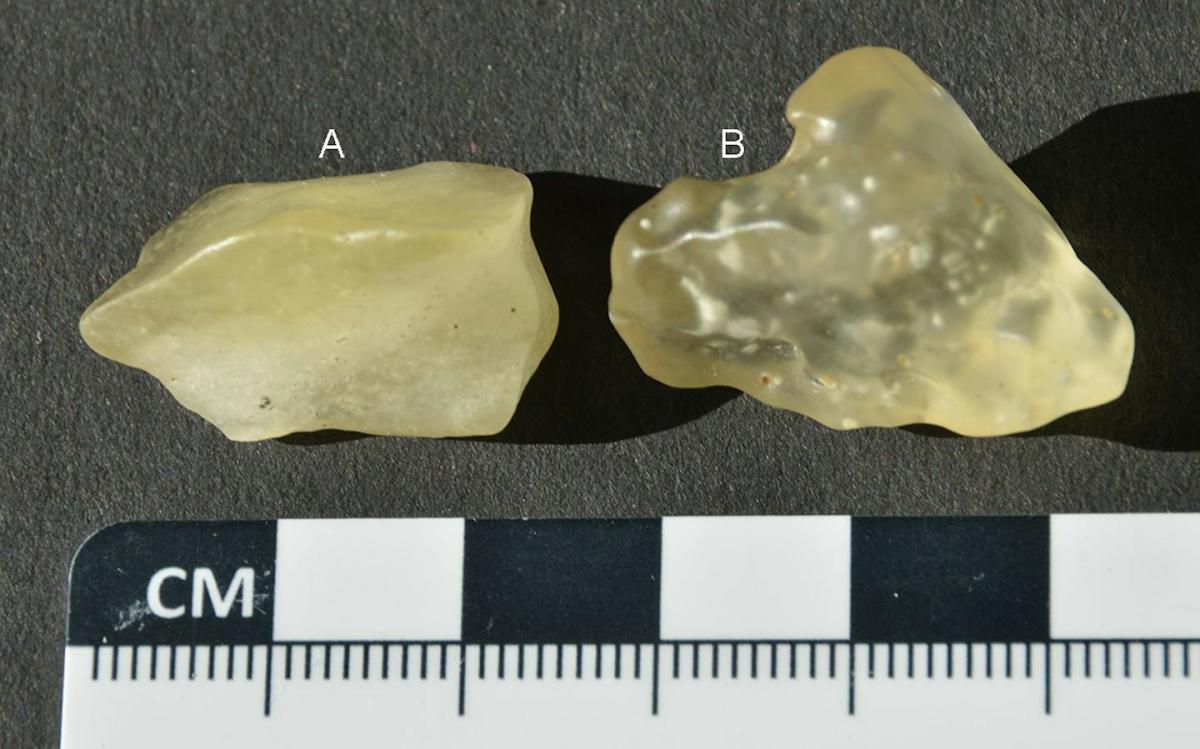The Great Sand Sea Desert spans an area of 72,000km², connecting Egypt and Libya. Those fortunate enough to find themselves in the south-eastern part of the Libyan desert or the south-western parts of Egypt may stumble upon fragments of yellow glass strewn across the sandy landscapes. Also referred to as Libyan desert glass, this curious material was first documented in a scientific paper in 1933. While appreciated for its allure and relative rarity by mineral collectors, it harbors an air of mystery surrounding its origins. Evidence of this ancient glass was even found within a pendant located in the tomb of Egyptian pharaoh Tutankhamun. Natural glasses exist in various locations around the globe, such as moldavites from the Ries crater in Europe and tektites from the Ivory Coast. Libyan desert glass is particularly unique due to its richness in silica and the sheer quantity in which it’s found.
The definitive source of this glass has been a topic of contention among experts for almost a century. Speculation included theories that it might have come from moon volcanoes, formed by lightning strikes, or produced via sedimentary or hydrothermal processes. There were even hypotheses of its origins being rooted in a massive meteor explosion or a nearby meteorite crater. Recent advancements in microscopy have paved the way for new theories. A group of researchers from universities and science centers in Germany, Egypt, and Morocco have identified Libyan desert glass as the result of a meteorite’s impact on the Earth’s surface.
Even more intriguing is the age of this glass. Previous studies concluded that the glass is approximately 29 million years old. A subsequent investigation revealed that the glass’s material was composed of quartz grains coated with mixed clay minerals, iron, and titanium oxides that raised further questions. This anomaly prompted a current study, where researchers employed a state-of-the-art transmission electron microscopy (TEM) technique to examine the glass. This meticulous examination uncovered minerals within the glass called zirconium oxide (ZrO2), adorned with different types of rare polymorphs such as cubic zirconia and orthorhombic zirconium oxide. These minerals are indicative of high pressure and temperature, conditions only achievable through a meteorite impact on Earth or a nuclear explosion.
Although this groundbreaking discovery resolves a part of the mystery, the enigma persists regarding the glass’s parental crater. Researchers plan to utilize remote sensing studies and geophysics to locate this crater and unlock yet another chapter in this fascinating tale. As we continue to uncover the secrets embodied within the great Libyan desert glass, nature continues to astound with its impressive feats.
This feature article was authored by: Elizaveta Kovaleva, from the University of the Western Cape.


